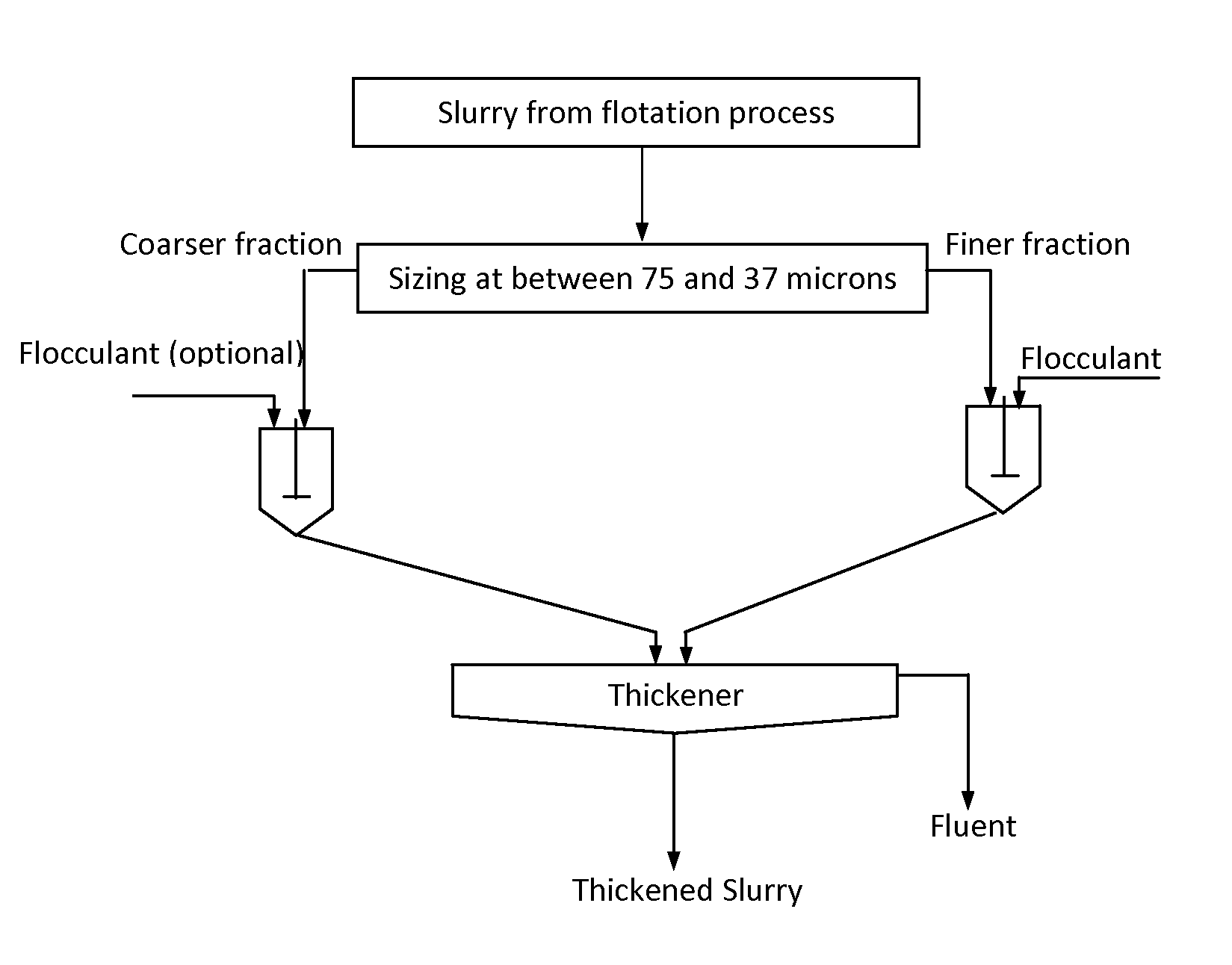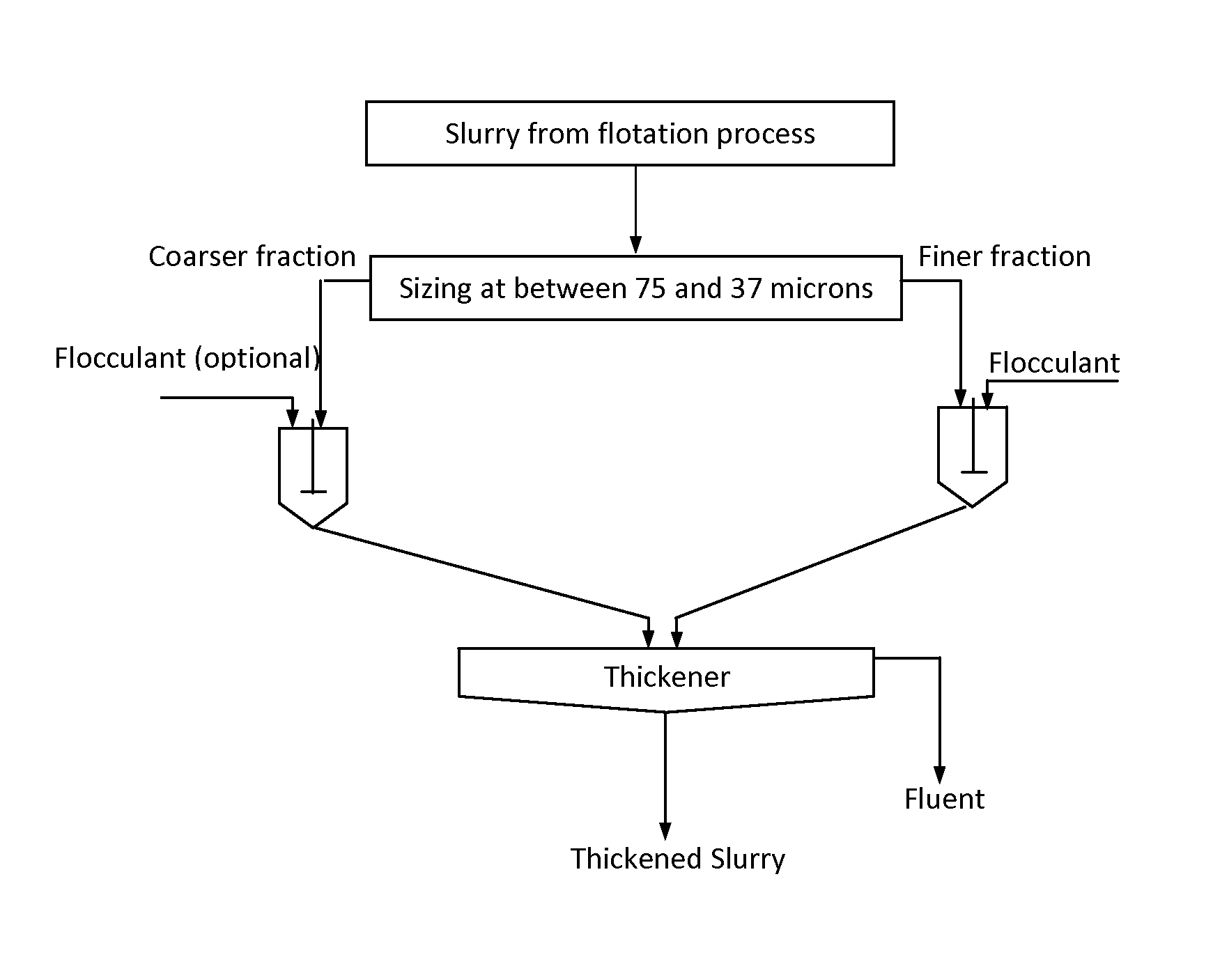Enhancing sedimentation performance of clarifiers/thickeners
a technology of clarifiers and thickeners, applied in the direction of centrifuges, separation processes, filtration separation, etc., can solve the problems of reducing the dewatering capacity of equipment, imposing adverse effects on affecting the dewatering performance of thickeners, so as to improve the dewatering performance and enhance the performance
- Summary
- Abstract
- Description
- Claims
- Application Information
AI Technical Summary
Benefits of technology
Problems solved by technology
Method used
Image
Examples
example 1
[0008]In a potash plant operation, the −20 mesh particle size fraction of ore was subjected to reverse flotation to remove the acid-insoluble minerals as impurities (tailings). The tailings were then flocculated with a flocculant and settled in a thickener in order to recycle the saturated brine to the flotation process. Sometimes, a thick layer of fluffy flocs (up to 5% the tailings) was formed on the top of thickener. Such a fluffy floc layer leads to poor performance of the thickener, resulting in poor quality of the recycled brine and in reduction of overall flotation efficiency. For example, the recovery of the potash can drop to 5%.
[0009]With this invention, tailing was split at 400 mesh (37 microns). The −400 mesh fraction was treated with a flocculant and settled. There was a sharp separation between solids and liquid brine. No floc layer was formed on the top of the brine. The −20+400 mesh fraction was settled without the addition of flocculant. The two fractions of the tai...
example 2
[0011]In a molybdenum flotation operation, the molybdenite concentrate (about 40%-200 mesh in size) was fed to a thickener and treated with a flocculant for sedimentation, followed with filtration for final dewatering. A thin layer of molybdenite concentrate was noted to float on the liquid in the thickener. This molybdenum was lost with the discharge of the overflow liquid from the thickener. A sample of the concentrate was taken, split at 200 mesh, and treated separately with the same flocculant. The liquid above the settle solids was clear, and no fluffy float material was observed. The loss of the molybdenum from the sedimentation process was prevented. When the two fractions of the treated concentrate were combined for sedimentation, the water above the settled solids was still clear, and no fluffy float material was observed. The new process increased the percent solids of the settled solids by 1-2%. In this new process, a split of the concentrate at 200 mesh could be made wit...
PUM
| Property | Measurement | Unit |
|---|---|---|
| splitting size | aaaaa | aaaaa |
| splitting size | aaaaa | aaaaa |
| size | aaaaa | aaaaa |
Abstract
Description
Claims
Application Information
 Login to View More
Login to View More - R&D
- Intellectual Property
- Life Sciences
- Materials
- Tech Scout
- Unparalleled Data Quality
- Higher Quality Content
- 60% Fewer Hallucinations
Browse by: Latest US Patents, China's latest patents, Technical Efficacy Thesaurus, Application Domain, Technology Topic, Popular Technical Reports.
© 2025 PatSnap. All rights reserved.Legal|Privacy policy|Modern Slavery Act Transparency Statement|Sitemap|About US| Contact US: help@patsnap.com


